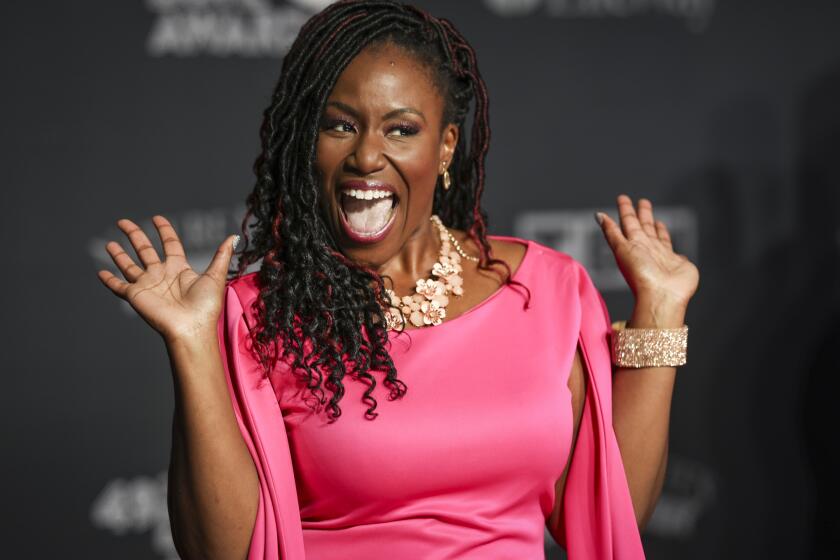Review: ‘The Abolitionists’ shows the people who led to Lincoln
Even as he helped orchestrate the American Revolution and the creation of modern democracy, John Adams worried that the framers of history, more interested in portraiture than landscape, would choose one or two individuals — Benjamin Franklin, George Washington — to create a mythology of supermen who single-handedly built a nation. For years that fretful insight proved true, and though Adams eventually got his due, it certainly applies to other moments of cataclysmic change, none more so than the Civil War.
Certainly in light of Steven Spielberg’s “Lincoln,” one could be forgiven for believing that Abraham Lincoln was the driving force behind the abolition of slavery in America. Yet even Lincoln admitted that he had been in danger of falling on the wrong side of the issue, politically if not personally, and that his actions were influenced by the relentless pursuit of justice by a group of Americans who devoted years of their lives to the abolition of slavery.
Which is why anyone who has ponied up to see “Lincoln” really needs to tune into the “American Experience” three-part documentary “The Abolitionists.” Though lacking the majesty of Tony Kushner’s script or Daniel Day-Lewis’ performance, “The Abolitionists” is a much more inclusive depiction of how slavery came to be outlawed in this country.
FULL COVERAGE: Golden Globes 2013
Written, produced and directed by Rob Rapley, “The Abolitionists” uses the now-standard combination of dramatic reenactments, photographs and narration to chronicle the rise of the anti-slavery movement in the United States through a handful of its better-known proponents. The story of William Lloyd Garrison provides the narrative spine.
In 1831, Garrison founded the Liberator, a Boston newspaper that became both a clearinghouse and platform for scattered abolitionists. Pious, pacifist and doing what he considered God’s work, Garrison had, nonetheless, a remarkably modern understanding of political celebrity. When Angelina Grimke, whose views caused her to flee the South Carolina home of her wealthy, slave-holding family, wrote an admiring letter to Garrison, he quickly realized the potential influence of an anti-slavery Southern woman and sent her on a speaking tour across the country.
Likewise, when the newly escaped Frederick Douglass told his story for the first time at a Boston town hall meeting, Garrison lost no time in encouraging the young man to use his gift for oratory to spread the truth about slavery. Douglass became Garrison’s protégé until student eclipsed teacher and the two men fell out, refusing to speak for years.
Harriet Beecher Stowe, the author of “Uncle Tom’s Cabin,” and John Brown, hanged for his unsuccessful raid on the federal arsenal at Harper’s Ferry, are also discussed at length. Stowe came to her anti-slavery views after the death of her young son; in her grief, she felt connected to the countless enslaved mothers separated from their children. Her book, written to ensure that her child’s death would bring about some good in the world, is perhaps the most influential novel in American history, and both Garrison and Douglass were, not surprisingly, early supporters.
“The Abolitionists,” being only a three-part endeavor rather than a Burnsian epic, is forced to ignore many notable abolitionists (Lucretia Mott, for example, shows up several times in a photograph but is never mentioned) and downplays the concurrent rise of feminism — many, including Grimke, Susan B. Anthony and Elizabeth Cady Stanton considered their work as abolitionists entwined with the cause of women’s suffrage.
AWARDS SEASON: Golden Globes 2012 Ballot
Fortunately, Rapley wields the few he has chosen wisely, to reveal not only the relatively small world of the anti-slavery community but the decades-long grind of working against a society and government that seemed perfectly willing to allow the United States to remain a slave nation forever. Small gains were inevitably answered by large setbacks as the politically powerful Southern states pushed back with a largely pro-slavery federal government.
Although none but a few radicals like Brown had ever preached violence, much less war, it was the relentless demands of the abolitionists that slowly turned more and more Americans against slavery, allowed the election of Lincoln and caused the Southern states to feel their only option was secession. (Less than a week after Gen. Robert E. Lee surrendered, when the flag was raised once again over Ft. Sumter where the first shots were fired, Garrison was present — at Lincoln’s invitation — to see the fruit of his 35-year labor.)
It is a moving and emotional documentary in part because the horror of slavery is so vividly recounted, but also because it reveals and celebrates the audacity and grit of people who simply will not take “no” for an answer. Those who feel that religion is too often used as an excuse for violence and exploitation may take some comfort in the role it played in ending slavery; virtually every abolitionist, especially Grimke and Garrison, believed they were doing God’s will and that the collective soul of America would never be safe until the slaves were freed.
If true greatness is difficult to achieve for those in power, it is virtually impossible for those who are not. And yet the dedication of a small group of ordinary Americans, fighting for the rights of people they did not know, changed the world completely.
----
‘American Experience: The Abolitionists’
Where: KOCE
When: 9 p.m. Tuesday
Rating: TV-PG-LV (may be unsuitable for young children with advisories for coarse language and violence)
<runtime:include slug=” la-et-three-must-read-tv-stories-feature-well” />
More to Read
The complete guide to home viewing
Get Screen Gab for everything about the TV shows and streaming movies everyone’s talking about.
You may occasionally receive promotional content from the Los Angeles Times.







